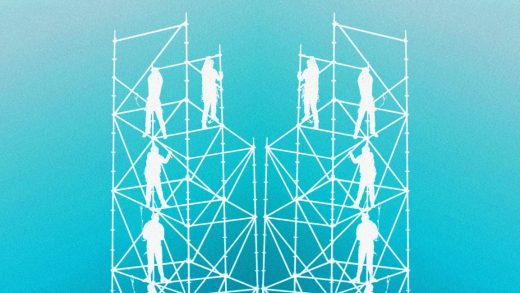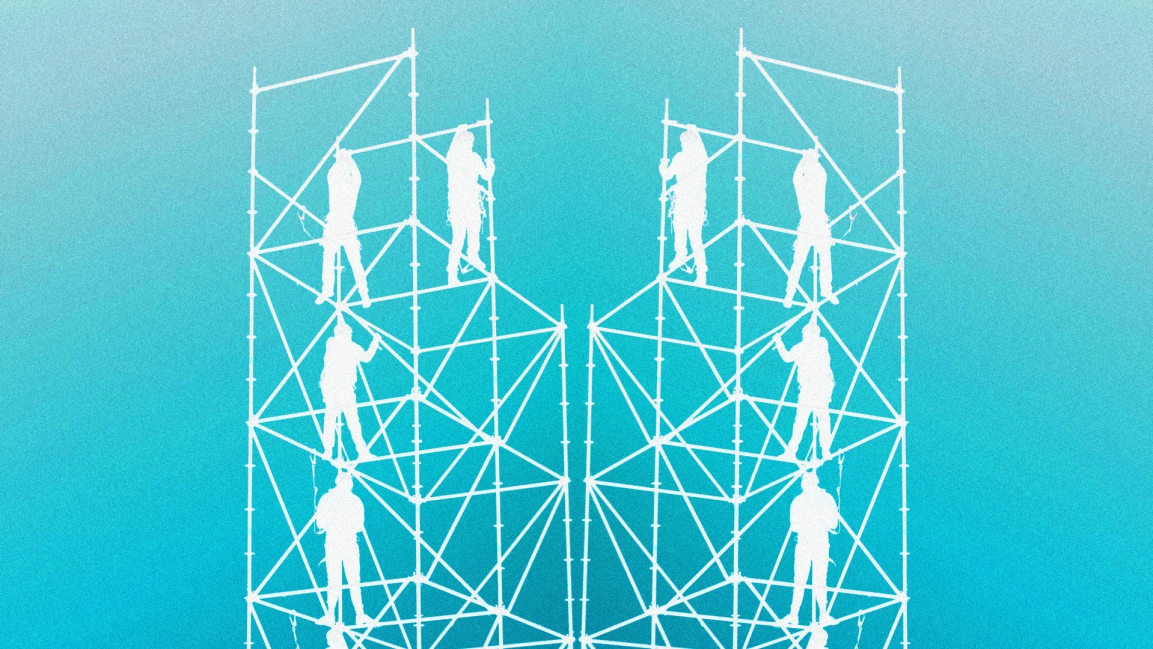4 ways to make sure teams are really connected in 2022
Connecting teams in a business is like taking all the parts of a house: the electrical, the plumbing, sheetrock, flooring, foundation, roof, windows, insulation, and putting them all together to create a home. None of those parts are that functional without the others.
Bringing our company’s culture together in actions and goals was the vision for 2021. We intended to accomplish this in 2019 and recognized then there was a lot of groundwork to do. We had no foundation to support where we were going. In order to operate from a unified mission, five-year vision, and operational values, we needed to restructure our very foundation. We’d already failed in the past at making this happen, so we had to approach this from an entirely new direction.
In the early days, I’d solo-attend conventions, seminars, or workshops and come back telling people what the plan was. Insert crickets. It did not typically go over well. It sounded good, but people would be missing the why behind it. There was no ownership at varying levels of the company. I never knew exactly what wasn’t working, but I was committed to our various teams in the company working together in harmony.
“Success is not the absence of failure; it’s the persistence through failure.” ~Unknown
It finally struck me: No one really knows what others in the company are doing besides the more obvious day-to-day work you can see if you enter our physical space. Beyond that, anything administrative was kind of a joke. No one came forward stating exactly that, but it was implied in the disconnection of teams within the company and the cliques we had formed. Shifting into a collaborative culture, we’ve locked in on these four vital building blocks to create our foundation.
Eliminate unnecessary internal competition
We thought giving salespeople commissions was “just what you do.” What this did was create internal competitors. We’d have a sales team selling, sometimes, very one-off things that were harming the bottom line of the company.
Eliminating commission-based sales and becoming firm on our product line, allowed us to stop making all sorts of one-offs that were harming our operations. Furthermore, we structured a bonus plan that everyone in the company can access.
Create digital dashboards
It has been a game-changer for our hybrid team to have the results of their work publicly accessible. It’s also helpful as we doubled the size of the in-person work environment and walking up and checking in, even when you have teams that work in person together, isn’t always the best solution. Having these dashboards helps us better understand our productivity and start pinpointing wasted effort. We’ve been able to make time for committees driving organizational change by decreasing this wasted effort.
Encourage employee-run committees
We have a core leadership team that authors the annual Strategic Plan using input from the entire culture. We’ve opened the door to drive change no matter your position. You can have a part on a committee putting together a community mural being donated for a cause, participate in the next series of initiatives to ensure we’re nurturing an inclusive culture, or participate in advising our safety protocols in our safety committee.
The idea is that you have the option to simply show up to do your work for the week and focus only on what is in your job description, or as you master the operations of your role, you can reallocate that gain in efficiency to operate with 10% of your time monthly to these committees. As a result, we’re seeing more retention within our team, people are seeing there’s room to grow and take part in opportunities for change.
Have intentional onboarding and training
There are a lot of people in my professional circles indicating the lack of talent out there. Before I started running this company I distinctly remember a technology firm courting me as a new hire. I knew nothing about technology, so I wondered why they’d go after me. I learned that they hire the person and train in the skill set needed so the employee can really own their company’s processes.
We have done the same. Whether you’re working in-person in our manufacturing facility, or you’re remotely helping clients with selections, we have a process. You are hired, have an orientation path, and are gradually immersed in your role. The goal is to not only have you feel welcome but to set you up for success and competency.
The days of winging it and hoping things work out with a competitive talent market are long over. We take our new hires quite seriously and view them as gifting us with their time and willingness to learn. With this approach, in 2021 we’ve gone from 34 employees to 54 employees and grown 30%. Twenty-five percent of our workforce operates remotely.
By putting so much work into building a strong foundation, we’ve been able to scale safely, intentionally, and collaboratively.
Mercedes Austin is the founder of Mercury Mosaics.
Fast Company , Read Full Story
(14)



